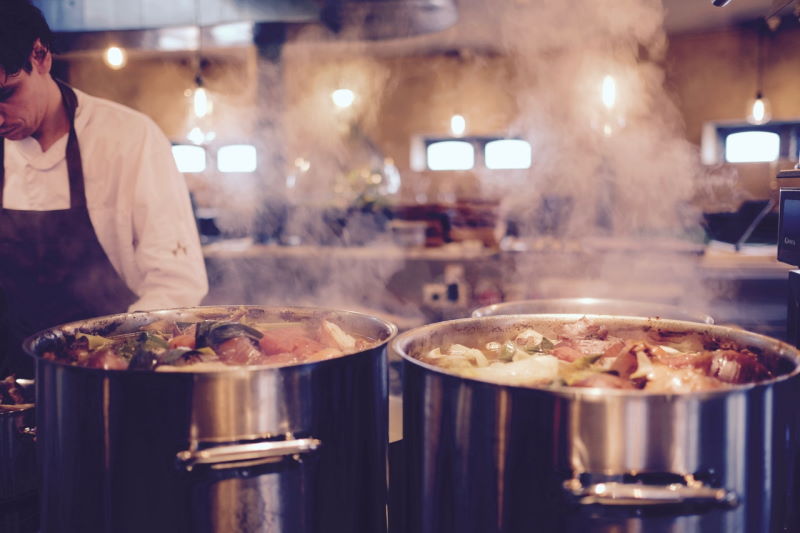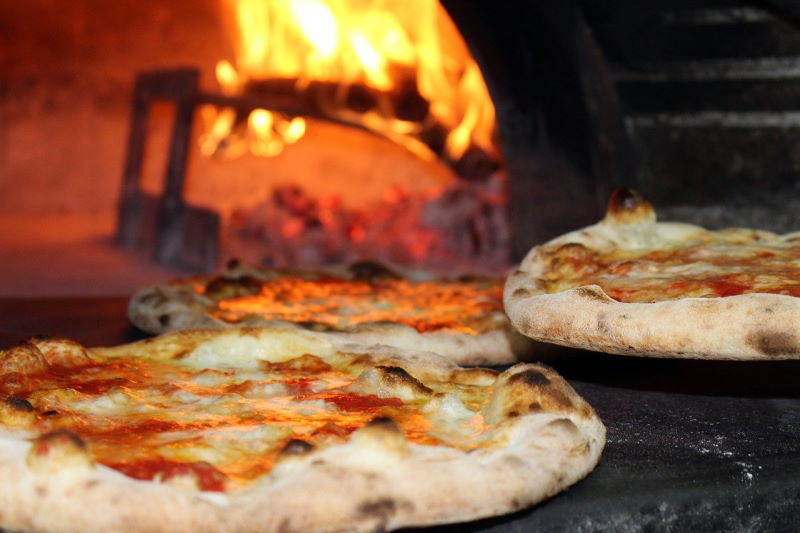Are you starting a restaurant business?
If so, you'll need to make a lot of decisions before opening your own place. One major consideration is having the necessary equipment in your kitchen.
Picking the right commercial kitchen equipment can make or break your restaurant. While the curbside appeal and interior design are important, your end product all depends on having the right kitchen.
Most commercial kitchens have professional equipment inside, which are often different from those found in regular home kitchens.
For example, many foodservice items have been made in a way that prioritizes quick sanitation and easy cleaning.
Greasecycle has put together this list of the commercial kitchen equipment you will need to run a successful restaurant. While this overview doesn't include every single item, it will give you a better understanding of some commercial kitchen must-haves.

#1: Refrigeration Equipment
Everything starts with proper food storage. You can choose between reach-in and walk-in fridges.
- Reach-in fridges are classic fridges that come in a wide variety of sizes and specifications. These form the backbone of every small to a medium-sized commercial kitchen.
- Walk-in fridges are always large and spacious. Smaller commercial kitchens never opt for this type of fridge due to financial constraints, or simply not needing so much space. Bigger restaurants with a larger inventory will definitely benefit from investing in a walk-in fridge.
#2: Food preparation counters
Unfortunately, many restaurant owners overlook the importance of this crucial piece of equipment. Cutting surfaces and food preparation counters are pillars of your kitchen.
The best material for a food preparation counter is top-grade stainless steel. That's because stainless steel offers superior protection against corrosion, rust, and the harmful effects of strong cleaning products.
Cutting surfaces in commercial kitchens are often made of wood or plastic. Wooden cutting boards are healthier and last longer, whereas plastic boards are considerably easier to clean.

#3: Grease trap
A grease trap is a device that prevents fat, grease, and oil runoff into the sewer or septic tank. These are useful in commercial kitchens because they greatly reduce the risk of blockages.
Additionally, there are outstanding environmental benefits to the use of grease traps. Removing fat particles from wastewater cuts health hazards for both people and wildlife.
#4: Cookware
The particular cookware items you need depends on what kind of food you will prepare in the kitchen. Generally, you'll need the following items in your commercial kitchen:
- Hand tools including ladles, tongs, whisks, and spatulas
- Various pots and pans
- Knives and peelers
- Plastic or glass containers
A smart approach to save money on cookware is buying second-hand cooking tools.
#5: Commercial hood
Ventilation is the key to preserving air quality. In some states, the need for hoods in restaurant kitchens is mandated by law.
Inspect your commercial kitchen hoods and wider ventilation system on a regular basis to ensure safe working conditions.
#6: Ovens
You can choose between gas ovens and electric ovens. Gas ovens require a higher upfront expense, but may prove to be cheaper in the long run.
Electric ovens, on the other hand, are cheaper to buy, but using them on a daily basis may be more expensive.
Additionally, you can choose between a deck oven, brick oven, and a conveyor oven. Here is a quick lowdown on the pros and cons of these ovens:
- Deck oven: You can prepare a lot of different menu items using a deck oven. The downside is that this appliance needs continuous tending.
- Brick oven: This is something that works well for pizzeria-type commercial kitchens. Brick ovens are either half-spherical or barrel vault, depending on the dome shape. The direct combustion gives pizzas an unmatched quality and aroma.
- Conveyor oven. Compared to deck ovens, you don't need highly-skilled employees to operate a conveyor oven. Training is quick, and the operating procedures are comparatively easier.

#7: Shelving
Commercial kitchens can benefit from efficient and safe storage of all items. Shelves come in two types: mobile and stationary shelves.
Mobile shelves work great in a busy kitchen, because you can easily move them for quicker access.
Stationary shelves provide the benefit of keeping your aisles at a steady size. Whichever type of shelving you opt for, it's important to keep the shelves safe and free of contamination at all times.
#8: Safety equipment
You need to make sure that your commercial kitchen is up to North Carolina health and safety standards.
Here is some equipment that will keep your employees and premises safe:
- Fire extinguishers
- Aprons
- Fire blankets
- First-aid kit
- Oven mitts
- Surveillance cameras
#9: Deep-Fryer
Many restaurants require a deep-fryer in their kitchen. The key to making delicious and crispy french fries, mozzarella sticks, and any breaded menu item is a high-quality deep-fryer.
Check the capacity and working temperatures of different deep-fryers to find the one best suited for your commercial kitchen's needs. Also, consider the unique features and ease of cleaning before making your decision.
In a nutshell: What do you need in a commercial kitchen?
Commercial kitchens differ from cooking areas in homes. The cookware, furniture, and appliances are optimized for speed and efficiency.
To sum up, here are the top things you need to have in your commercial kitchen:
- Food preparation counters and cutting surfaces
- Refrigeration equipment (fridges and freezers)
- Grease trap
- Commercial hood
- Ovens
- Shelving
- Cookware
- Safety equipment